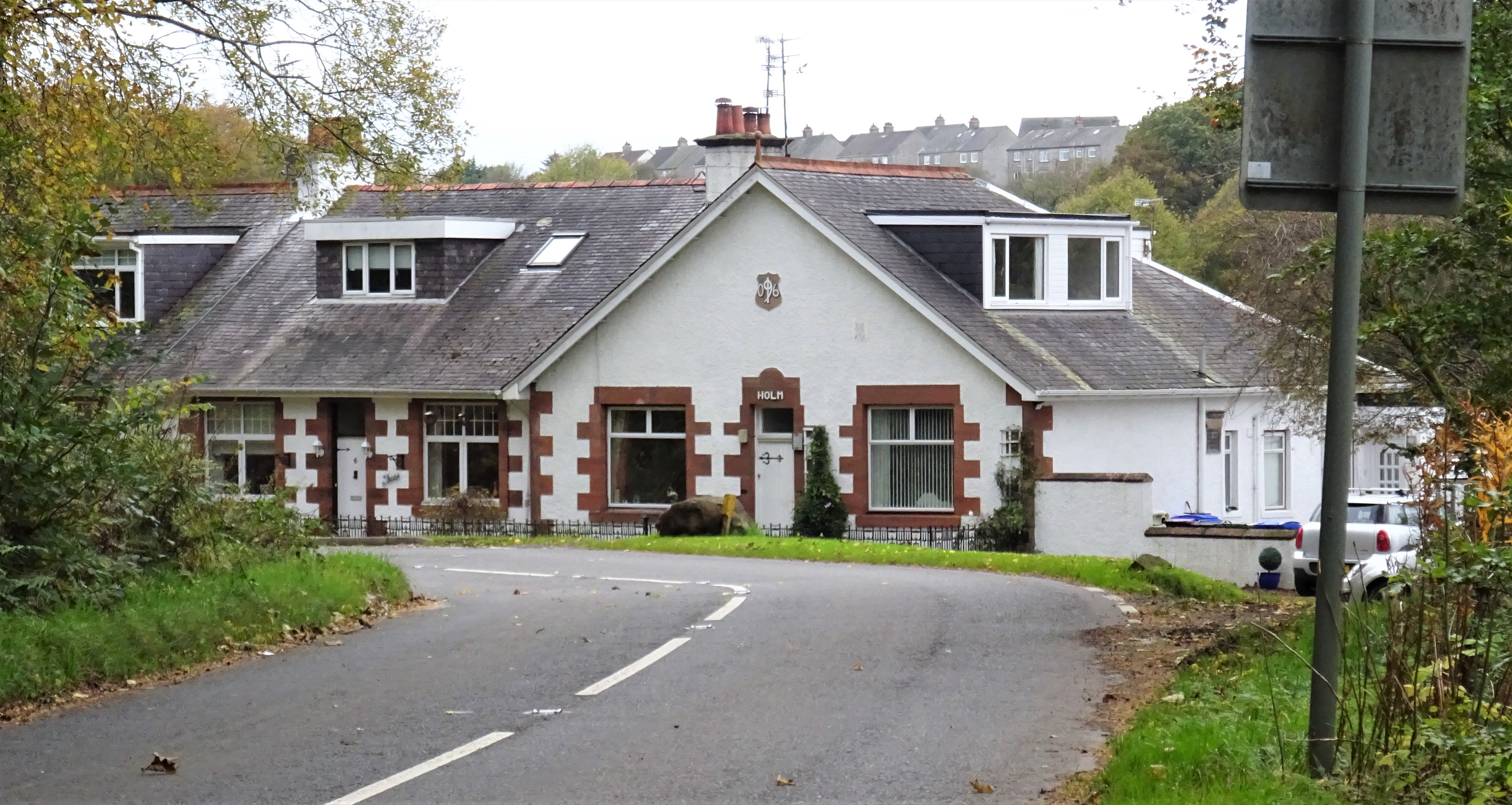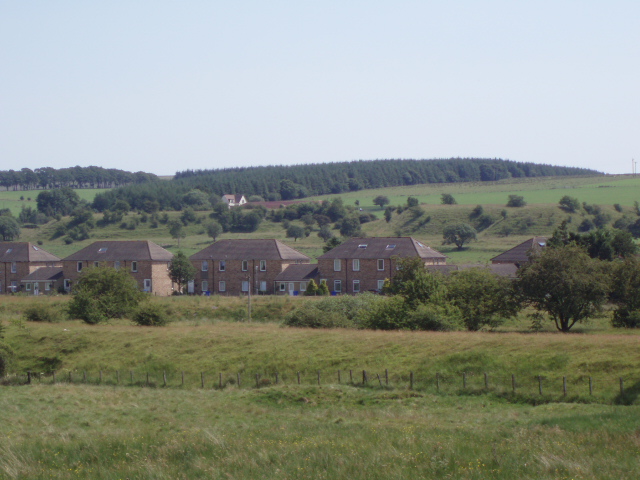|
Castle And Barony Of Gadgirth
The Castle and Barony of Gadgirth was held by the Chalmer family, originally De Camera, with successive castles and a mansion house overlooking the River Ayr at the border of the Parish of Coylton, the old district of Kyle, now part of South Ayrshire, Scotland. History The Barons of Gadgirth Reginaldus de Camera, later Chalmer, is recorded to have held the Barony of Gadgirth as a hereditary possession, during the reign of William the Lion (1165-1214). The family continued in residence until circa 1761 and in 1800 Colonel Joseph Burnett, retired from the East India Company, purchased part of the old barony, including Gadgirth and the Old Ha' Castles. The name 'Chalmer' derives from the post of Lord or Great Chamberlain of Scotland, ''Camerarius Regii'' a position held by Herbert de Camera from 1124 to 1153, a member of the family who were of Saxon or Norman descent. In 1357 the 'Farthing Land of Gadgard (sic) is recorded its tithe and 50s as the assessed rent. The lands of ... [...More Info...] [...Related Items...] OR: [Wikipedia] [Google] [Baidu] |
Annbank
Annbank is a village in South Ayrshire, Scotland. It is around five miles east of Ayr. Originally a mining settlement, it once had a rail link to Ayr via the Auchincruive Waggonway. The village has a village hall, bakery, shop, bowling green, junior football club ( Annbank United) and a pub. The pub is known as "Tap o'the Brae" which in May 2014 won Ayrshire pub of the year. Weston Bridge Halt railway station was located at the bridge of that name near Annbank and stood close to Ayr Colliery No.9. It was used by miners travelling to their respective collieries. Annbank House once overlooked the River Ayr and Gadgirth Holm however it was demolished after use as a hotel. Gadgirth Old Ha' stood on the River Ayr close to Privick Mill and the old Gadgirth House. The Castle and Barony of Gadgirth was once located beside the River Ayr to the east of Annbank. Notable people *James Brown, Member of Parliament 1918-1939 *Sam Donnelly Samuel Donnelly (born 1 January 1874) was a Sc ... [...More Info...] [...Related Items...] OR: [Wikipedia] [Google] [Baidu] |
Mary Queen Of Scots
Mary, Queen of Scots (8 December 1542 – 8 February 1587), also known as Mary Stuart or Mary I of Scotland, was Queen of Scotland from 14 December 1542 until her forced abdication in 1567. The only surviving legitimate child of James V of Scotland, Mary was six days old when her father died and she inherited the throne. During her childhood, Scotland was governed by regents, first by the heir to the throne, James Hamilton, Earl of Arran, and then by her mother, Mary of Guise. In 1548, she was betrothed to Francis, the Dauphin of France, and was sent to be brought up in France, where she would be safe from invading English forces during the Rough Wooing. Mary married Francis in 1558, becoming queen consort of France from his accession in 1559 until his death in December 1560. Widowed, Mary returned to Scotland in August 1561. Following the Scottish Reformation, the tense religious and political climate that Mary encountered on her return to Scotland was further agitated by prom ... [...More Info...] [...Related Items...] OR: [Wikipedia] [Google] [Baidu] |
Castles In South Ayrshire
A castle is a type of fortified structure built during the Middle Ages predominantly by the nobility or royalty and by military orders. Scholars debate the scope of the word ''castle'', but usually consider it to be the private fortified residence of a lord or noble. This is distinct from a palace, which is not fortified; from a fortress, which was not always a residence for royalty or nobility; from a ''pleasance'' which was a walled-in residence for nobility, but not adequately fortified; and from a fortified settlement, which was a public defence – though there are many similarities among these types of construction. Use of the term has varied over time and has also been applied to structures such as hill forts and 19th-20th century homes built to resemble castles. Over the approximately 900 years when genuine castles were built, they took on a great many forms with many different features, although some, such as curtain walls, arrowslits, and portcullises, were ... [...More Info...] [...Related Items...] OR: [Wikipedia] [Google] [Baidu] |
Irvine, North Ayrshire
Irvine ( ; sco, Irvin, gd, Irbhinn, IPA: �iɾʲivɪɲ is an ancient settlement, in medieval times a , and now a new town on the coast of the in North Ayrshire, |
William Roy
Major-General William Roy (4 May 17261 July 1790) was a Scottish military engineer, surveyor, and antiquarian. He was an innovator who applied new scientific discoveries and newly emerging technologies to the accurate geodetic mapping of Great Britain. His masterpiece is usually referred to as Roy's Map of Scotland. It was Roy's advocacy and leadership that led to the creation of the Ordnance Survey in 1791, the year after his death. His technical work in the establishment of a surveying baseline won him the Copley Medal in 1785. His maps and drawings of Roman archaeological sites in Scotland were the first accurate and systematic study of the subject, and have not been improved upon even today. Roy was a fellow of the Royal Society and a member of the Society of Antiquaries of London. Life and works Early life and family Roy was born at Milton Head in Carluke parish in South Lanarkshire on 4 May 1726. His father was a factor in the service of the Gordons/Hamiltons of ... [...More Info...] [...Related Items...] OR: [Wikipedia] [Google] [Baidu] |
Cronberry
Cronberry is a small hamlet situated north-east of Cumnock and one mile north-east of Lugar, in East Ayrshire, Scotland. History Cronberry has a Women's Rural Institute which meets in the old school. Diane and Holly Fallon were murdered at Cronberry in 2009 by a former soldier, Thomas Smith, who was sentenced to serve a minimum of 32 years behind bars. The mining village The village, in the Parish of Auchinleck, had a public school and in the 1880s a population of 799.Love, Page 181 Cronberry (or Kronberry) appears on maps as far back as 1654. Its actual age, however, is thought to be much older. It probably, though as yet unconfirmed, existed as part of the fief of Auchinleck (various spelling) well before 1400. The more recent Cronberry was built in the 1860s by the Eglinton Iron Company. Cronberry had seven miner rows set in lines and not streets or squares, the back of one line facing the front of another.Hutton, Page 56 One row had a store, managed as a co-op and as a br ... [...More Info...] [...Related Items...] OR: [Wikipedia] [Google] [Baidu] |
Glasgow And South Western Railway
The Glasgow and South Western Railway (G&SWR) was a railway company in Scotland. It served a triangular area of south-west Scotland between Glasgow, Stranraer and Carlisle. It was formed on 28 October 1850 by the merger of two earlier railways, the Glasgow, Paisley, Kilmarnock and Ayr Railway and the Glasgow, Dumfries and Carlisle Railway. Already established in Ayrshire, it consolidated its position there and extended southwards, eventually reaching Stranraer. Its main business was mineral traffic, especially coal, and passengers, but its more southerly territory was very thinly populated and local traffic, passenger and goods, was limited, while operationally parts of its network were difficult. It later formed an alliance with the English Midland Railway and ran express passenger trains from Glasgow to London with that company, in competition with the Caledonian Railway and its English partner, the London and North Western Railway, who had an easier route. In 1923 the G&S ... [...More Info...] [...Related Items...] OR: [Wikipedia] [Google] [Baidu] |
Battle Of Waterloo
The Battle of Waterloo was fought on Sunday 18 June 1815, near Waterloo, Belgium, Waterloo (at that time in the United Kingdom of the Netherlands, now in Belgium). A French army under the command of Napoleon was defeated by two of the armies of the Seventh Coalition. One of these was a British-led coalition consisting of units from the United Kingdom of Great Britain and Ireland, United Kingdom, the Netherlands, Kingdom of Hanover, Hanover, Duchy of Brunswick, Brunswick, and Duchy of Nassau, Nassau, under the command of the Duke of Wellington (referred to by many authors as ''the Anglo-allied army'' or ''Wellington's army''). The other was composed of three corps of the Kingdom of Prussia, Prussian army under the command of Field Marshal Gebhard Leberecht von Blücher, von Blücher (the fourth corps of this army fought at the Battle of Wavre on the same day). The battle marked the end of the Napoleonic Wars. The battle was contemporaneously known as the Battle of Mont Saint-J ... [...More Info...] [...Related Items...] OR: [Wikipedia] [Google] [Baidu] |
Battle Of Trafalgar
The Battle of Trafalgar (21 October 1805) was a naval engagement between the British Royal Navy and the combined fleets of the French and Spanish Navies during the War of the Third Coalition (August–December 1805) of the Napoleonic Wars (1803–1815). As part of Napoleon's plans to invade England, the French and Spanish fleets combined to take control of the English Channel and provide the Grande Armée safe passage. The allied fleet, under the command of the French admiral, Pierre-Charles Villeneuve, sailed from the port of Cádiz in the south of Spain on 18 October 1805. They encountered the British fleet under Lord Nelson, recently assembled to meet this threat, in the Atlantic Ocean along the southwest coast of Spain, off Cape Trafalgar. Nelson was outnumbered, with 27 British ships of the line to 33 allied ships including the largest warship in either fleet, the Spanish ''Santísima Trinidad''. To address this imbalance, Nelson sailed his fleet directly at the allied ba ... [...More Info...] [...Related Items...] OR: [Wikipedia] [Google] [Baidu] |
Horatio Nelson
Vice-Admiral Horatio Nelson, 1st Viscount Nelson, 1st Duke of Bronte (29 September 1758 – 21 October 1805) was a British flag officer in the Royal Navy. His inspirational leadership, grasp of strategy, and unconventional tactics brought about a number of decisive British naval victories during the French Revolutionary and Napoleonic Wars. He is widely regarded as one of the greatest naval commanders in history. Nelson was born into a moderately prosperous Norfolk family and joined the navy through the influence of his uncle, Maurice Suckling, a high-ranking naval officer. Nelson rose rapidly through the ranks and served with leading naval commanders of the period before obtaining his own command at the age of 20, in 1778. He developed a reputation for personal valour and firm grasp of tactics, but suffered periods of illness and unemployment after the end of the American War of Independence. The outbreak of the French Revolutionary Wars allowed Nelson to return to service, ... [...More Info...] [...Related Items...] OR: [Wikipedia] [Google] [Baidu] |









